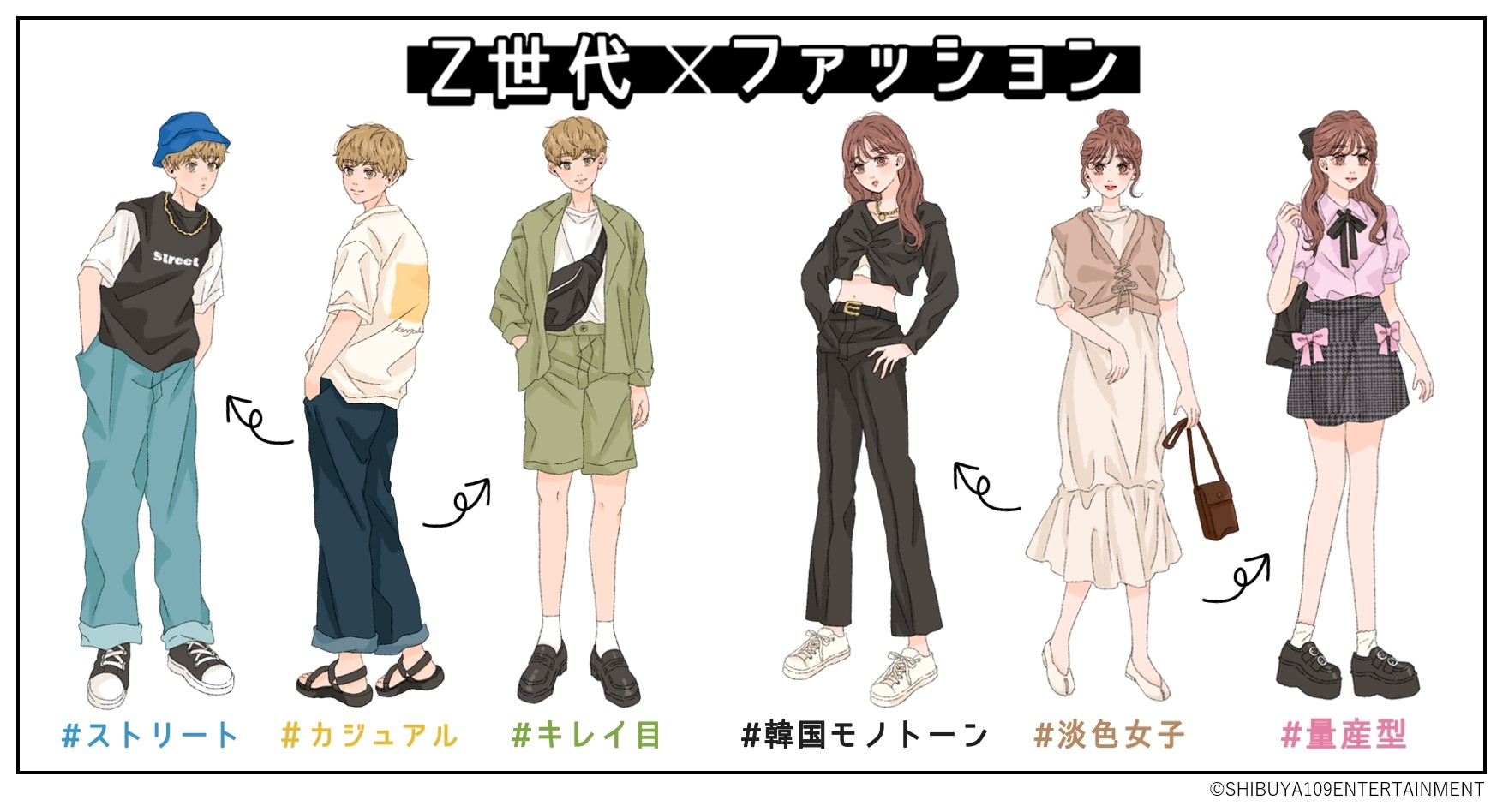
Brands are out, coordinating how you look with what you’re doing is in.
A recent survey by Shibuya 109 Lab, a youth marketing research company associated with the Tokyo fashion shopping center of the same name, recently asked 205 people in Generation Z about their fashion choices.
85 young men and 120 young women between ages 15 and 24 who are affiliated with Shibuya 109 Lab’s independent network were surveyed, starting with the question, “When you go out, how do you decide what to wear?”
Interestingly, most respondents seemed to carefully coordinate their outfits according to their plans for the day. The top answer of all respondents was “I choose according to where I am going” (67.3 percent). Close behind was “I choose according to what I’m doing” (53.7 percent).
▼ Here are the fashions sported by A-chan, who prefers “Light-color girl” style, “Street” style, and “Mass-production girl” style.
30.7 percent even said they plan their outfit according to who they’re hanging out with, meaning they align their fashion with their companions’ fashion tastes.
One female respondent said: “When we wear similar clothes, it looks like we’re really good friends. Plus, it creates a sense of unity in photos when what we’re wearing matches the place we’re going.”
Next, the respondents were asked about their own fashion tastes, with the option to choose multiple responses.
For men, far and away the most popular fashion style was “Casual” (58.8 percent), followed by “Clean and Sophisticated” (24.7 percent). Close behind in third place was “Street” style, which earned 22.4 percent of the vote.
While the men seemed to have a majority preference for casual clothing, women’s responses were more evenly divided. The top fashion style for young women was “Casual Girly” (30 percent), followed by “Casual Boyish” (27.5 percent), and “Clean and sophisticated” (25 percent).
▼ B-chan prefers “French girly”, “Casual boyish”, and “Korean monotone” styles.
What was surprising, though, was that for both young men and young women, a good proportion of respondents selected three or more styles that represented their personal tastes. 28.2 percent of men and 44.2 percent of women seem to rotate between various different fashion styles, indicating they don’t subscribe to one particular trend.
When asked to rate how well the statement “I choose fashion based on taste, not on brands” applied to them, out of all respondents, 28.3 percent said “Very accurate”, and 42.9 percent said “Somewhat accurate”, meaning that, in total, 71.2 percent agreed that they don’t factor brands into their fashion choices as much as the style of the clothes.
One female college student said: “I like Korean fashion so I wear a lot of Korean-style clothes, but I shop online so I don’t remember what brands I buy.”
A male college student said: “I don’t really have a favorite brand, though I do shop at GU and Uniqlo a lot. I also buy from Zozotown, but I don’t know what brands.”
▼ C-kun, who likes to rotate between “Casual”, “Sharp”, and “Korean Monotone” fashion styles.
If not brands, then what are respondents looking for when shopping for clothes?
In response to the question, “What do you focus on when shopping for clothes?”, 63.9 percent chose “The design”, 55.1 percent said, “The fit”, and 44.9 chose “How well I can mix and match it”.
Multiple participants mentioned a social media “Body Type Diagnosis”, which they used to determine their build and which clothes and fashion styles would suit them best.
▼ The “Body Type Diagnosis” includes the “Straight” type, the “Wave” type, and the “Natural” type, which each have different styles that suit them.
All of this is meant to provide them with the best clothes so that, when taking full-body photos to share on social media, they’ll look the best they can.
Social media is also the number one way that these young people get information about fashion. 83.4 percent said they get most of their fashion news from Instagram, 40.5 percent said “Video streaming services”, and 33.7 percent said “TikTok.” “From family and friends” was another popular response, tying with “video streaming services” at 40.5 percent.
The major takeaway from this survey is that fashion for Generation Z in Japan is becoming less a tool for self-expression, and rather more a tool for communication, such as, for example, using a coordinated look to say “Look how close we are!”
While of course there are many influences on their choices, such as the popularity of Korean fashion, it seems that Japanese young people are less concerned about following a particular style or buying a particular brand and more concerned about finding fashions that suit them so they will look good on social media. As social media continues to be a prevalent influence on young people’s personal identities, we can only wonder how they’ll affect the next generation’s fashion choices, too.
Source: PR Times, Shibuya 109 Lab via Netlab
Images: PR Times
● Want to hear about SoraNews24’s latest articles as soon as they’re published? Follow us on Facebook and Twitter!